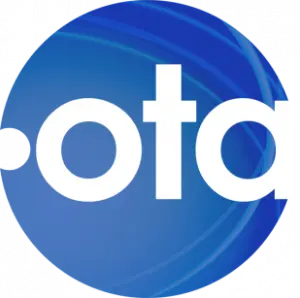Holli Plomer

Judges: Mr Bill Ip, Consultant Orthodontist at Newcastle-Upon-Tyne Hospital Trust
Mr James Green, Senior Chief Orthodontic Technician and Laboratory Manager at Great Ormond Street Hospital and Broomfield NHS Trust
Mrs Kerry Lancaster, Chief Orthodontic Instructor and Laboratory Manager at Eastman Dental Institute, UCL
We were very happy to receive entries from a total of five applicants from all over the United Kingdom.
All candidates were issued with a unique candidate number and all entries were identified only by this candidate number making the marking process anonymous.
Round 1 of judging took place on 5th August 2022 with Kerry Lancaster, and James Green.
Round 2 of judging took place at the end of August by Bill Ip.
The final decision was made on 5th September, with all judges in agreement.
The marking criteria used to judge in round 1 (parts one and two) was the Eastman Dental Institute assessment criteria forms, originally designed to assess practical work produced by Orthodontic postgraduates as part of their MClinDent programme. Bill Ip judged round 2 using his own highly specialised clinical knowledge and experience.
Findings from judging:
Part One – Inclined bite plane appliance
The judging panel were impressed with the standard of the acrylic work. All the baseplates were highly polished on the non-fitting surfaces, with no visible porosity and the fitting surface were clear of plaster debris and smooth to the touch. Our only criticism was that most of the baseplates were too thick in the palate. We also thought the inclined bite planes were all too high with some finishing at incisal level on the anterior teeth. The standard of the wire work was varied with some good Adams clasps and one or two good labial bows. Overall, we felt that the best appliance was constructed by candidate number: 65446
Part Two
Again, the judging panel were impressed with the standard of acrylic work, mainly the clarity and high polish on the non-fitting surface. There was some good wire work construction and placement of expansion screws on the midline of the palate.
We were looking for an ELSAA type design – 3 of the entries were ELSAA’s and the other two were slightly different in design.
Our comments of the three ELSAA types were:
- all very bulky/thick in the palate.
- There were faults with the wire work – most Adams clasps were not engaging the undercuts, and some would interfere occlusally.
- Only one had included occlusal rests
- only one of the cross over wires had been constructed correctly
- only one of the labial bows would not interfere occlusally.
- All had a saddled plate that was split correctly on the midline but one of them had left pumice debris in the screw.
- Only one of them had the acrylic contacting part of the palatal aspect of the 7’s.
The two other designs had included a double cantilever spring to procline the upper right central and either a labial bow or Robert’s retractor to retrocline the 2-2 in conjunction with the midline expansion screw. Our comments of these two appliances were:
- The labial bow was too high coming over both contact points and this interfere with the occlusion
- Both had full baseplates- only one included the 7’s.
- The Adams clasps were constructed well on one of the appliances.
Overall, we felt that the best appliance was constructed by candidate number: 61561
Part Three
The judges agreed that there were two write-ups that stood out from the rest due to their presentation, choice of design and rationale, explanation of components and use of photos and /or diagrams. Out of these two write-ups the judges agreed that candidate number 65161 was the best overall.
| Part Three assessed by: | ||
| How well is it presented? E.g., Title, candidate number, appropriate headings. Presented in a methodical way i.e., introduction, middle and end. Include diagrams and photos of design/appliance/components. Use of correct grammar, correct use of technical terms and a decisive writing style. | 35 | |
| Does it name the appliance or give a design? E.g., good explanation of rationale behind choice of design and to name the appliance i.e., ELSAA or URA with ……. | 5 | |
| Does it include diagrams and/or pictures? E.g., Prescription style drawing including labels of components with wire gauges. Photos of completed appliance Diagrams/photos of similar appliances or components | 10 | |
| Does the choice of design meet the brief? ‘Design and construct a URA to expand the arch and align the upper anterior teeth with appropriate fixation/retention to secure the appliance in situ.’ E.g., Will it expand the arch? (Buccal segments in particular) Will it align all the anterior teeth? Is there appropriate fixation/retention? | 30 | |
| Does it have a good explanation of each component? E.g., details on each component, what it is designed to do, how it works, wire gauges and possible alternative components that could be used – all ideally with diagram/photo included | 10 | |
| Does it contain a list of relevant references? E.g., up to 5 references, listed Harvard style (throughout text and full list at end) | 10 | |
| Total marks for part Three | 100 |
In conclusion the judges agreed that the overall winner of the BOS student Award is candidate number 65161
Judges report
By Kerry Lancaster
